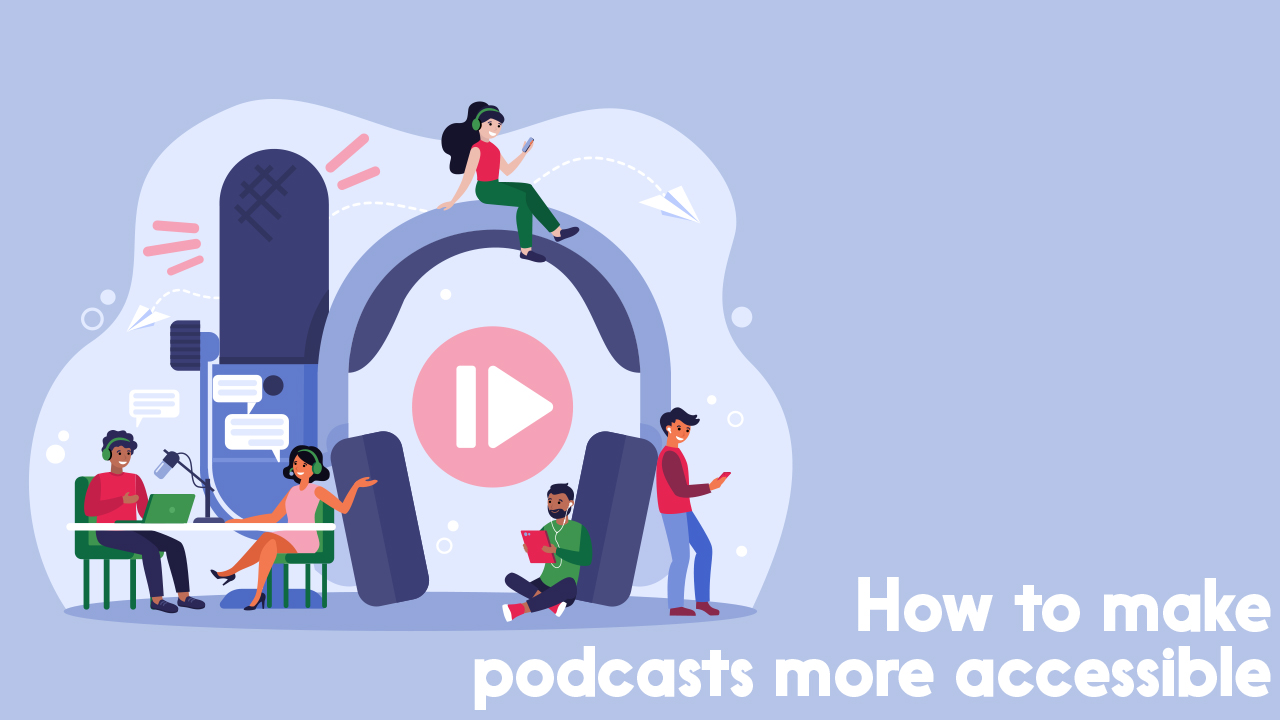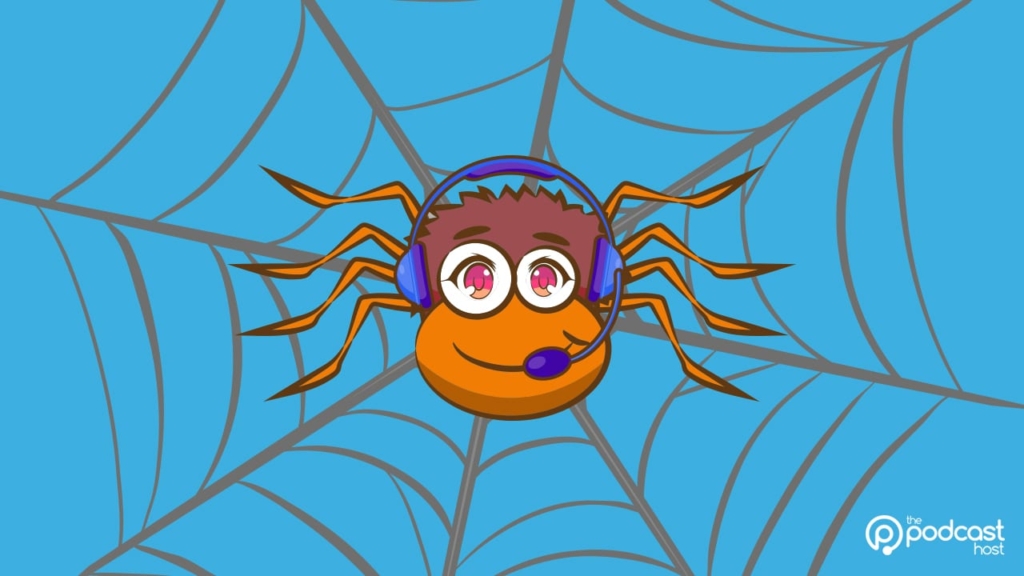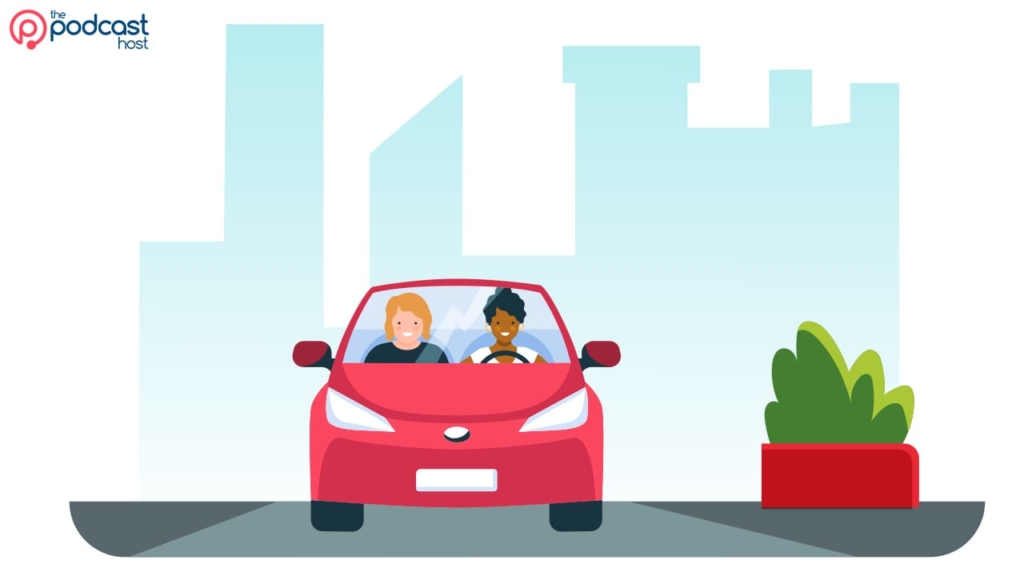How to Make Your Podcast Accessible (& Why You Should)

Podcast accessibility is a hot topic, but it also simply makes business sense. From ensuring a wide audience can access your content, to helping reinforce standard best practices, it makes sense to move towards accessibility.
But what does accessibility really mean in terms of podcasting? How can it help your show, and what can you start doing today to help more people get your hands on the good stuff? Let’s dig in and find out!
Why Should Your Podcast Be Accessible?
When it comes to why your podcast should be accessible, many will tell you that it’s simply the right thing to do—and I don’t disagree with them. But I’m not here to be your podcasting moral compass, and as someone who labours to put out a weekly show, I know that podcasting isn’t easy. Each additional step to take adds more responsibility and work to your plate, so everything has to be justified.
So, yes, while I do believe that podcasting accessibility is the right thing to do, I also know that it makes business sense as well. Both your audience and content benefit when you move towards accessibility. Not only do you open the doors to an audience that’s consistently underserved but wants the content, creating accessible content also means you’re implementing best practices that you should be doing regardless.
Accessibility helps your searchability so your audience (both those that have additional accessibility and those that don’t) can find you better. It puts your content out there in more formats for a larger audience grab. It could also be a legal requirement depending on where you are based. Now I am not a lawyer telling you that it is a legal requirement of your jurisdiction, I’m simply a writer mentioning that it could be a thing.
If podcasting accessibility is something that’s been on your mind for a while, or you’re just starting to think about it now, I’ve got some best practices that can help you move towards achieving it.
How to Improve Your Podcast Accessibility
1. Publish a Transcript
For many new to creating an accessible podcast, publishing a transcript is one of the easiest wins. Not only does publishing transcripts make podcasts more accessible, but it’s also good SEO practice. Most of the keywords you’d like that episode to rank for are likely included, after all.
Much like with the closed captions for your favorite bingeable TV series, a good podcast transcript includes more than simply what’s being said. It should include anything that adds value to the overall experience, including notes about noises, sound effects, background music, and even when people chuckle.
An AI-generated transcript is the cheapest way to go but mistakes are bound to happen. Human-created transcripts tend to be of the highest quality, but they can get pricey (think in the $1 per minute range) and add up over time. If you’re budget-strapped, you can start with an AI-generated script and give it a fine-tune edit to make sure that everything is correct and the meaning is conveyed properly. Here are some options when it comes to getting your episodes transcribed.
Podcast-maker tool Alitu now has episode transcriptions included, too. Now you can have one single place to record, edit, publish, and share your podcast. Check out how to make a podcast with Alitu, to see a complete range of its features.
Creating and uploading transcripts for a catalogue of episodes will probably take you a decent chunk of time. So, while you’re in the process, you can start by publishing episode scripts if you have them.
2. Provide Captions on Video Components
If your podcast has a video component, providing closed captions goes a long way to making sure more people can have access. Audio-only shows that publish audiograms should also consider having those closed captioned as well.
Closed captions aren’t just about accessibility—consumers are more likely to stop at a video that has closed captions for a few moments, even when the sound is off.
For many, closed caption viewing is their preference. I consume at least 50 percent of my content with captions on, and tend to steer away from content that doesn’t have it available.
3. Make Your Content Downloadable
Downloadable content in the podcasting space can be a bit of a touchy subject. There’s always a chance that some jerk out there is going to take all of your stuff—episodes, branding and all—and put it on their own feed.
Yes, it happens. But, I’ll let you in on a little secret—if someone’s really that shady, chances are they’re not using your handy little “download” button to do it. Downloading content, even if there’s not an option is easier than you think.
However, if you’re aiming for an accessible podcast having the option to download can make a huge difference. That way audience members that need to use a different platform to enjoy it have the option.
4. Provide a Video Component (if you don’t already)
It’s not lost on me that suggesting you add a video component to an audio-based podcast is probably the equivalent of doubling your work, but hear me out for one tiny little second because it is seriously something to think about.
There are OVER two billion (that’s billion with a “b”) users logged in to YouTube each month—and that’s people actually logged in, not creepers like me who just want to watch Jimmy Fallon and Tom Hanks act out scripts written by elementary school kids. And not all of those YouTube viewers are podcast listeners.
Posting a video version of your podcast to YouTube extends your prospective audience by a landslide. If you happen to have the capacity to do so, it not only makes your content more accessible but can give you a much larger audience—but don’t forget to include captions!

5. Provide an Accessible Website
When it comes to building an accessible website, it can get really complicated—like hire a developer complicated. Especially if you’re looking at big components like site mapping. But for the purposes of this post, let’s hone on a few basic accessibility functions that you can (and should) start using today.
There are three seriously helpful steps that you should already be doing to make your podcast website more accessible for the simple fact that they serve other purposes—like making sure you don’t scare people off your site and getting some of that sweet, sweet SEO street cred.
Good Color Contrast
Your background should have a sufficient contrast from your text. What does “sufficient contrast” mean, you ask? It means that you should be able to easily read the text on the background—for example, your background is white and your text is black.
This absolutely helps make your website more accessible, but you should already have this in place because it’s just design best practice. No one wants to try and read lime green text on a white background. If your website looks like it was created in 1999 using text-based HTML, I can guarantee no one is staying on it any longer than they have to.
Provide Alt Text for Images
For every image you put on your site there is an opportunity to write what’s called “alt text” for it. Alt text is a text description of what’s going on in the picture for example “black pug wearing birthday hat” is good alt text to describe a picture of a black pug wearing a birthday hat.
This text helps those who use screen readers understand what’s in the picture if they aren’t able to see it. Likewise, if your phone is disconnected from your site for some reason (and there are many reasons this could happen), the alt text stands in its place to let a visitor know what they should be seeing.
What many people don’t realize is that alt text is prime real estate when it comes to SEO. Google, and other search engines, LOVE when you include this because it helps them index images. That means that when someone Googles “hot pic of Chris Evans” and you have an image with alt text that says “hot pic of Chris Evans wearing Captain America costume” it’s possible that your image could pop up on their search, thus directing them to check out your website.
When it comes to marrying accessibility with SEO, it’s important that you do a good job of describing the image properly and not just putting “paranormal podcast” in every alt text—that’s not helpful to someone who can’t access the photo and Google will catch on. So, make sure to describe your images accurately, include a keyword if it actually makes sense with the image, and have a little fun with it!
Provide Alt Text for Non-Image Assets
If you are uploading a video or audio track right to your website (and any other form of media that is not image or text-based for that matter), you can and should provide alt text for these as well. Even links can include alt text.
Again, you want to make sure that the alt text you provide is accurate and descriptive otherwise it’s not helpful and truly doesn’t serve its purpose. Take some time to poke around your website and see where you might be missing out on some of those sweet alt text SEO opportunities.
Provide an Accessible Media Player
Not all media players are made equal when it comes to accessibility. You want to use media players for audio and video that have clear labels, can be read by screen readers and assistive technology, and work with keyboard controls.
This really goes for all of your content—you want to make sure that it’s accessible with screen readers or other assistive technology, so that everyone can enjoy the awesome content you work so hard on.

The Road to Podcast Accessibility
If you’re starting from scratch with accessibility, it can seem like a long overwhelming road. But fear not, you don’t have to do it all in one fell swoop.
There are parts that can be pricey (like getting a few years’ worth of episodes transcribed) and time-consuming (like updating all of your website’s alt text), so the best strategy is to make a plan in the first place. Lay out the steps that you want to take towards accessibility, figure out what you need to make that happen, and lay it out in a reasonable timeline.
It’s OK to start small, everyone has to start from somewhere!
For more advice and guidance on how to make your podcast more accessible, be sure to check out this episode of Podcraft with accessibility evangelist Nicolas Steenhout.
And remember, you’ll find courses and resources on everything how-to-podcast in Podcraft Academy. We run weekly live Q&A sessions in there too, and it’d be great to work with you there.
